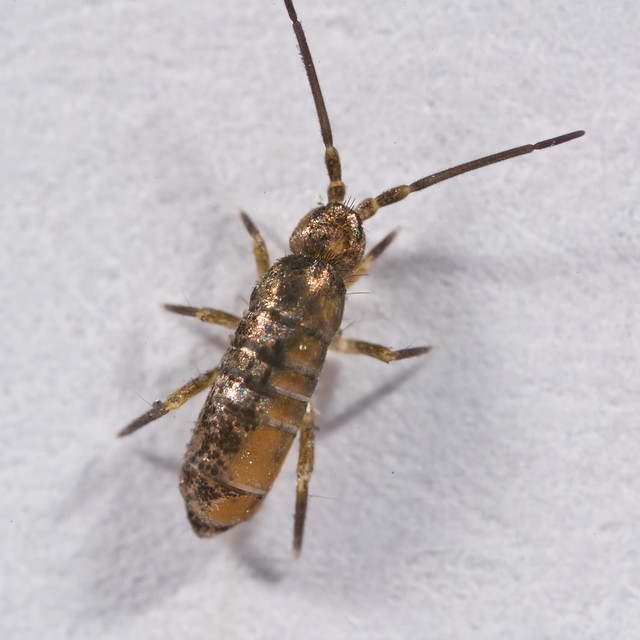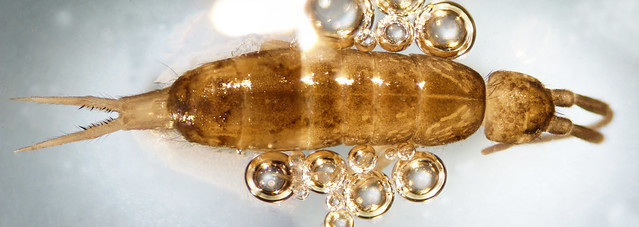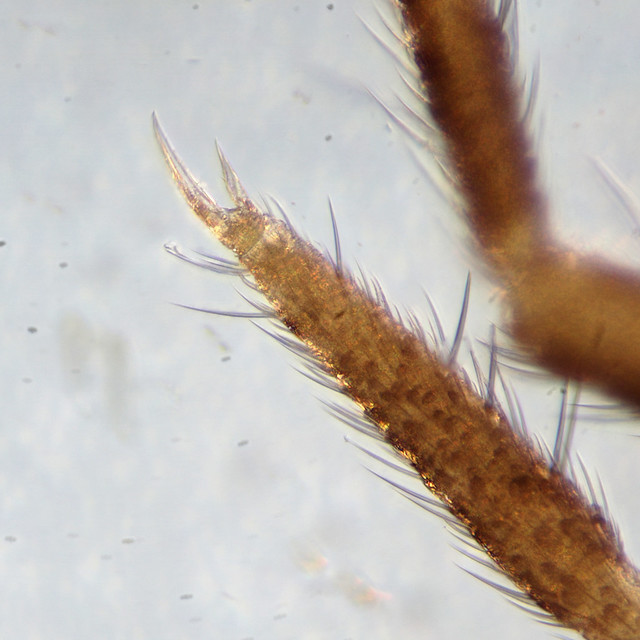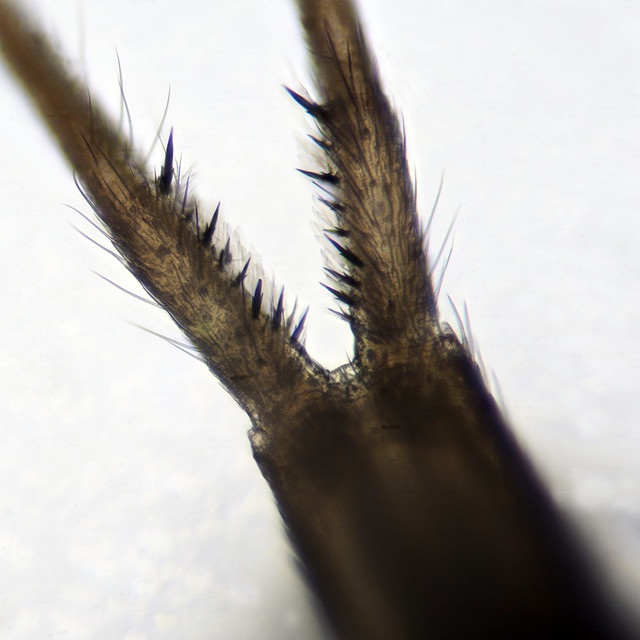
Tomocerus minor is an extremely common and widespread species, up to ~4.5mm long. As will all all Tomocerus species, the body is heavily covered in dark scales, but these can be easily lost in preserved specimens, changing the appearance to a golden colour:

In T. minor, the empodium of the foot is about two-thirds the length of the claw:

The spines on the inner side of the dens are tridentate, a highly characteristic feature which makes it impossible to confuse with any other species:

Males can be recognized by the presence of a genital plate with circumgenital setae, absent in females, as seen here.
No comments:
Post a Comment
Comments welcome, I will respond as soon as I can.
Note: only a member of this blog may post a comment.